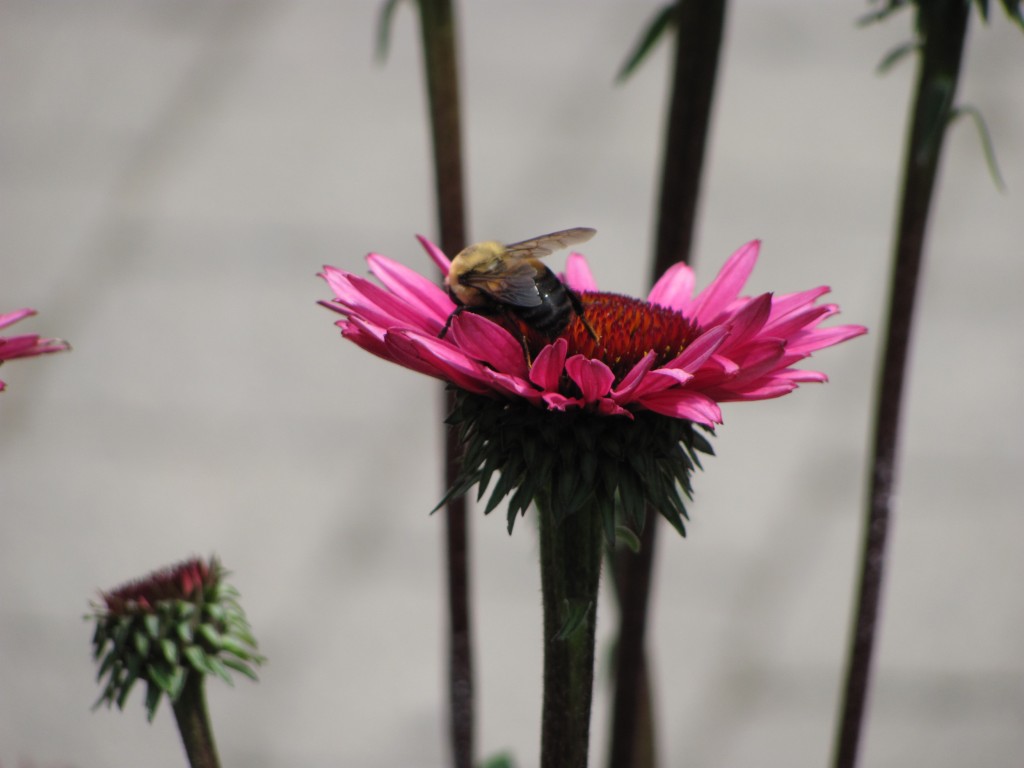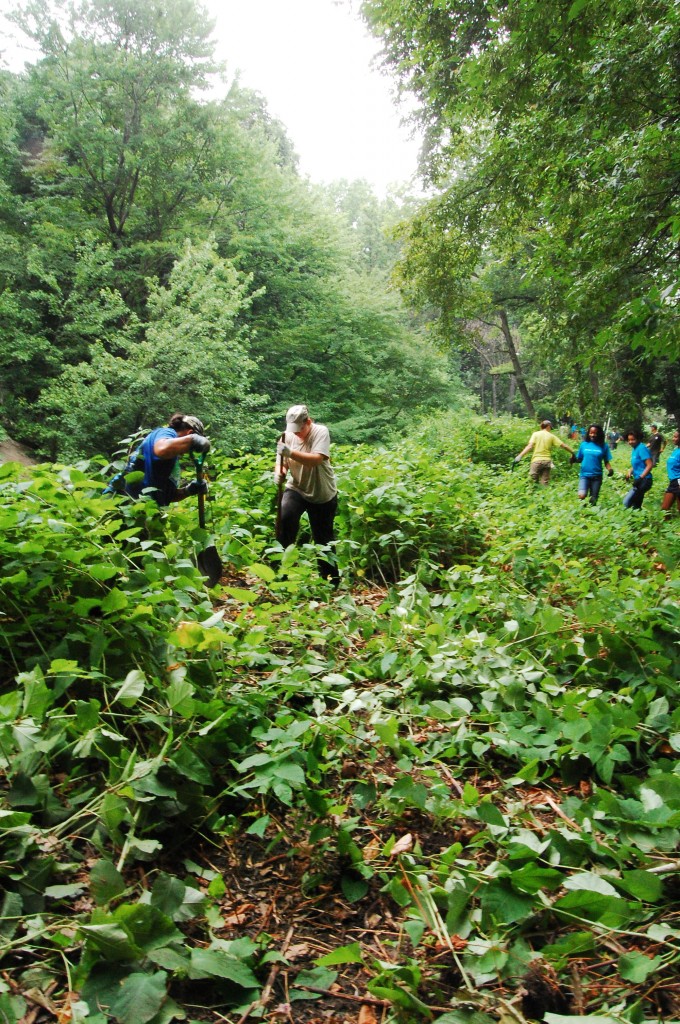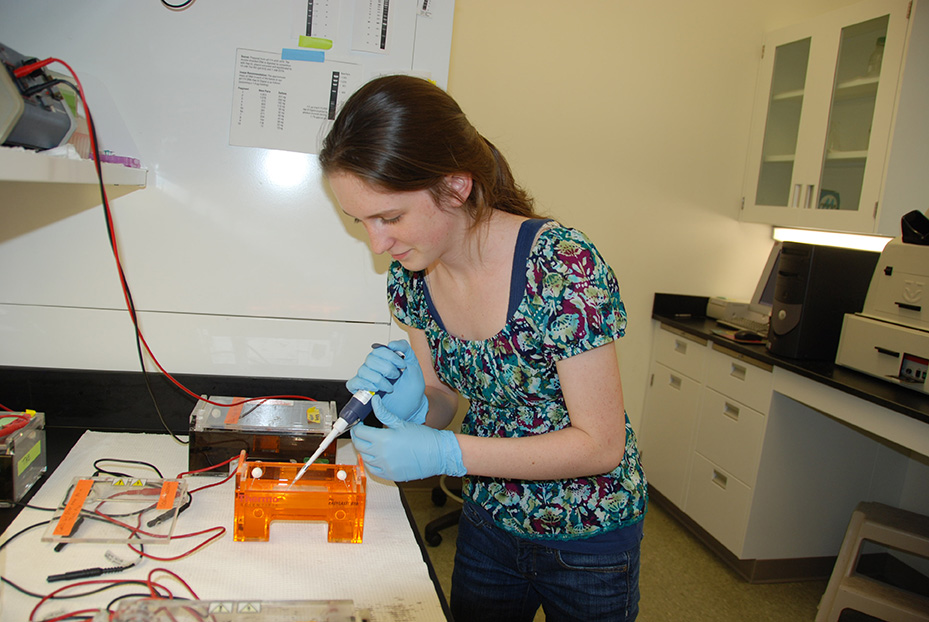Interns at the Garden: Counting Bees, Fighting Invasive Plants
Posted in Behind the Scenes on July 15 2011, by Ann Rafalko
Hello from Leah and Francesca! We are high school students interning for the summer here at The New York Botanical Garden. We are working on research projects for science competitions like the Intel Science Talent Search (Another NYBG high school intern’s project made it into the finals of this prestigious competition this year!). We will both be seniors in September, Leah Buchman at South Side High School in Rockville Center, and Francesca Giordano at Yorktown High School. This summer we are both working on an expansion of projects that we began in the summer of 2010.

Leah’s Project
Last summer, I did a study on the diversity of bees within different areas of the Garden. I caught bees in 10 areas of the Garden and learned to identify the bees with help from Dr. John Ascher at the American Museum of Natural History. Using four different indices of diversity–evenness, abundance, richness, and Shannon-Weaver diversity–I was able to conclude that there is a higher diversity of bees in areas that have a greater diversity of flowers.
The specific area of the Garden that has the highest diversity is the Seasonal Walk. This summer I am looking at the gender of bees to see if there is any correlation to the flowers visited. For example I am hoping to answer questions like: Do male bees go to certain flowers while females go to others? Feel free to come stop by and say “Hi!” I will be the girl with the net and bright colored bowls in the Perennial Garden, Ladies Border, Seasonal Walk, and Home Gardening Center this summer.

Francesca’s Project
My research is a study on management of the invasive plant, Japanese Knotweed. Now you’re probably thinking: What is an invasive plant? Little did you know, but plants can be pretty vicious, especially Japanese Knotweed. It is a non-native plant that grows rapidly and blocks sunlight from reaching desired plants. Japanese Knotweed is also known for having an underground stem called a rhizome. This rhizome contains the stores of energy that the plant uses for growing, plus additional reserves. The rhizomes contain enough energy to allow one plant to sprout over 250 shouts just from a single underground stem! Our goal is to increase the diversity of the native plants along the Bronx River by using best management practices to control the Japanese Knotweed.
What we found so far is that two treatments–cutting and grubbing the Japanese Knotweed–are equally effective. In phase two, which is the project I am working on this summer, we will be repeating the same treatments from last year in the hope that they will further weaken the persistent Japanese Knotweed and increase native plant diversity. These plots are located long the Bronx River bank just south of Magnolia Way Bridge. Come check it out and see for yourself! I am also being assisted in my field work by the Explainers and the School of Professional Horticulture, and by volunteers including groups from American Express, Goldman Sachs, and Christodora.
We hope to see everyone here this summer!

